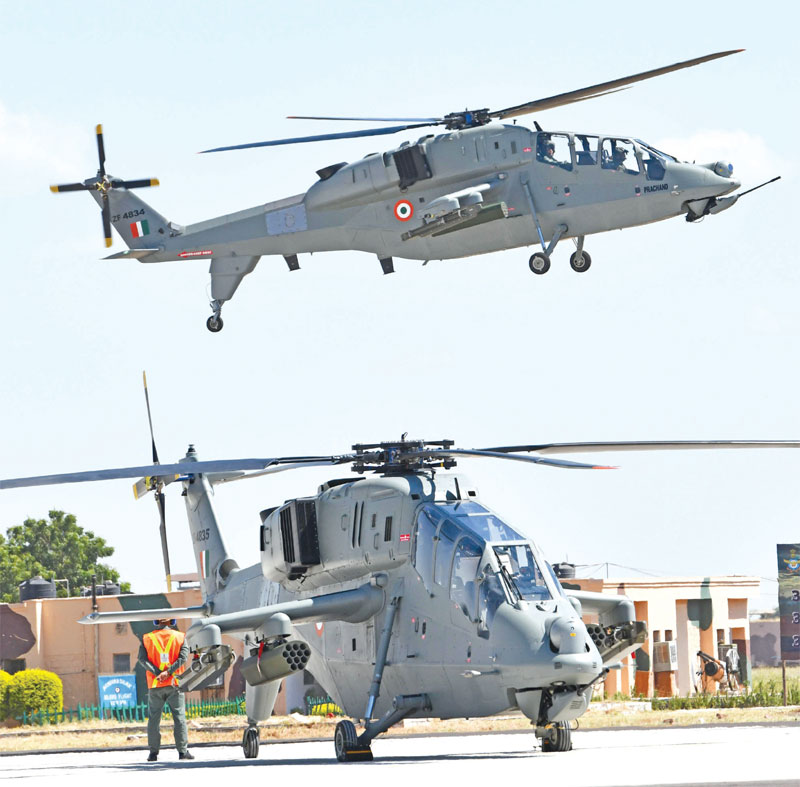Boots on the Ground
 Lt Gen. B.S. Pawar (retd)
Lt Gen. B.S. Pawar (retd)
The induction of the Prachand Light Combat Helicopter (LCH), a dedicated attack helicopter capable of operating at high altitudes into the Army Aviation Corps last year, has ushered in a transformational change in the army’s operational capability in war-fighting at high altitudes.
The lack of this capability has been the bane of the Indian military for a long time and its disastrous effects were felt during the 1999 Kargil War, which glaringly revealed that the Indian military lacked a suitable attack helicopter capable of operating unrestricted in high-altitude terrain. The Russian-origin Mi-25/Mi-35 attack helicopters held by the Indian Air Force (IAF) were not capable of operating in such a terrain and environment. An attempt was made to overcome this critical operational shortfall by employing the Mi-17 transport helicopters suitably modified to carry guns, rockets and gun pods at those altitudes. However, these helicopters were extremely vulnerable to handheld surface-to-air missiles (SAMs) due to their large size and restricted manoeuvrability, and when one of these Mi-17s was shot down within two days of their employment the entire gambit of employing them in an armed role as a gunship was abandoned.
The Indian Army (IA) felt greatly handicapped during the Kargil conflict due to the lack of intimate support for ground troops from this critical and offensive weapon platform, the attack helicopter. This aspect was also amply dwelt on and highlighted in the Kargil Review Committee Report. This was the true impetus and trigger for the development of a multi-role combat helicopter capable of operating at extremely high altitudes. It was with this background that the government of the day approved the development of a dedicated attack helicopter capable of operating at extremely high altitudes, by the state-owned Hindustan Aeronautics Limited (HAL) in 2006, which was aptly named the Light Combat Helicopter (LCH). In October 2022, in a formal ceremony, the LCH was renamed Prachand, meaning the strong, powerful and fierce.

In the last two years, five LCH of the limited series production (LSP) have been inducted into the Army Aviation Corps while 10 have gone to the IAF. In a major development, based on the army and IAF’s projected requirements of additional LCHs to cater for high altitude deployments along the Line of Control (LoC) and Line of Actual Control (LAC), the ministry
Subscribe To Force
Fuel Fearless Journalism with Your Yearly Subscription
SUBSCRIBE NOW
We don’t tell you how to do your job…
But we put the environment in which you do your job in perspective, so that when you step out you do so with the complete picture.







